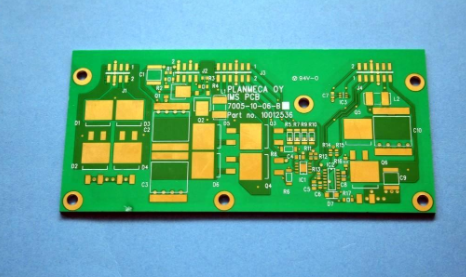The basic principle requirements of PCB printed circuit board diagram design
1. The design of the printed circuit board starts from determining the size of the board. The size of the printed circuit board is limited by the size of the chassis shell. It is the connection method of potentiometer, socket or other printed circuit board). The printed circuit board and the external components are generally connected by plastic wires or metal isolation wires. But sometimes it is also designed as a socket. That is: to install a plug-in printed circuit board in the device, leave a contact position as a socket.
For larger components mounted on the printed circuit board, metal accessories should be added to fix them to improve vibration and impact resistance.
2. The basic method of wiring diagram design
First of all, it is necessary to have a complete understanding of the specifications, dimensions, and areas of the selected components and various sockets; reasonable and careful consideration of the location of each component, mainly from the perspective of electromagnetic field compatibility and anti-interference. Short line, less crossover, power supply, ground path and decoupling are considered. After the position of each component is determined, it is the connection of each component. Connect the relevant pins according to the circuit diagram. There are many ways to complete it. The design of the printed circuit diagram has two methods: computer-aided design and manual design.

The most primitive is to arrange the layout by hand. This is more laborious, and it often takes several iterations to complete it. This is also possible when there is no other drawing equipment. This manual arrangement of layout methods is also very helpful for those who are just learning the printing plate layout. Computer-aided drawing, now there are many kinds of drawing software with different functions, but generally speaking, drawing and modification are more convenient, and they can be saved and printed.
Next, determine the required size of the printed circuit board, and according to the schematic diagram, initially determine the position of each component, and then continuously adjust the layout to make the layout more reasonable. The wiring arrangement between the components in the printed circuit board is as follows:
(1) Cross circuits are not allowed in printed circuits. For lines that may cross, you can use "drilling" and "winding" two methods to solve them. That is, let a lead "drill" through the gap under other resistors, capacitors, and triode pins, or "wind" from one end of a lead that may cross. In special circumstances, how complex the circuit is, it is also necessary to simplify the design. It is allowed to connect with wires to solve the problem of cross circuit.
(2) Components such as resistors, diodes, and tubular capacitors can be installed in "vertical" and "horizontal" installation methods. The vertical type refers to the installation and welding of the component body perpendicular to the circuit board, which has the advantage of saving space. The horizontal type refers to the installation and welding of the component body in parallel and close to the circuit board, and its advantage is that the mechanical strength of the component installation is better. For these two different mounting components, the component hole pitch on the printed circuit board is different.
(3) The grounding point of the same level of circuit should be as close as possible, and the power filter capacitor of this level of circuit should also be connected to the grounding point of this level. In particular, the grounding points of the base and emitter of the transistor of this level cannot be too far apart, otherwise the copper foil between the two grounding points will be too long, which will cause interference and self-excitation. Using such a "one-point grounding method" circuit will work better. Stable and not easily self-excited.
(4) The main ground wire must be arranged in strict accordance with the principle of high frequency-intermediate frequency-low frequency in the order of weak current to strong current. It must not be turned over and over randomly. The connection between the levels is rather long. To comply with this requirement. In particular, the grounding wire arrangement requirements of the frequency conversion head, regeneration head, and frequency modulation head are more stringent. If improperly, it will self-excite and make it unable to work.
High-frequency circuits such as FM heads often use large-area surrounding ground wires to ensure a good shielding effect.
(5) Strong current leads (common ground, power amplifier power leads, etc.) should be as wide as possible to reduce wiring resistance and voltage drop, and reduce self-excitation caused by parasitic coupling.
(6) The traces with high impedance should be as short as possible, and the traces with low impedance can be longer, because the traces with high impedance are easy to whistle and absorb signals, which will cause the circuit to be unstable. The power cord, ground wire, base trace without feedback components, emitter lead, etc. are all low impedance traces. The base trace of the emitter follower and the ground wire of the two channels of the radio must be separated, each forming one path., Until the end of the function is combined again, if two ground wires are connected back and forth, it is easy to produce crosstalk and reduce the degree of separation.
The above is an introduction to the basic principles and requirements of circuit board diagram design. Ipcb is also provided to PCB manufacturers and PCB manufacturing technology